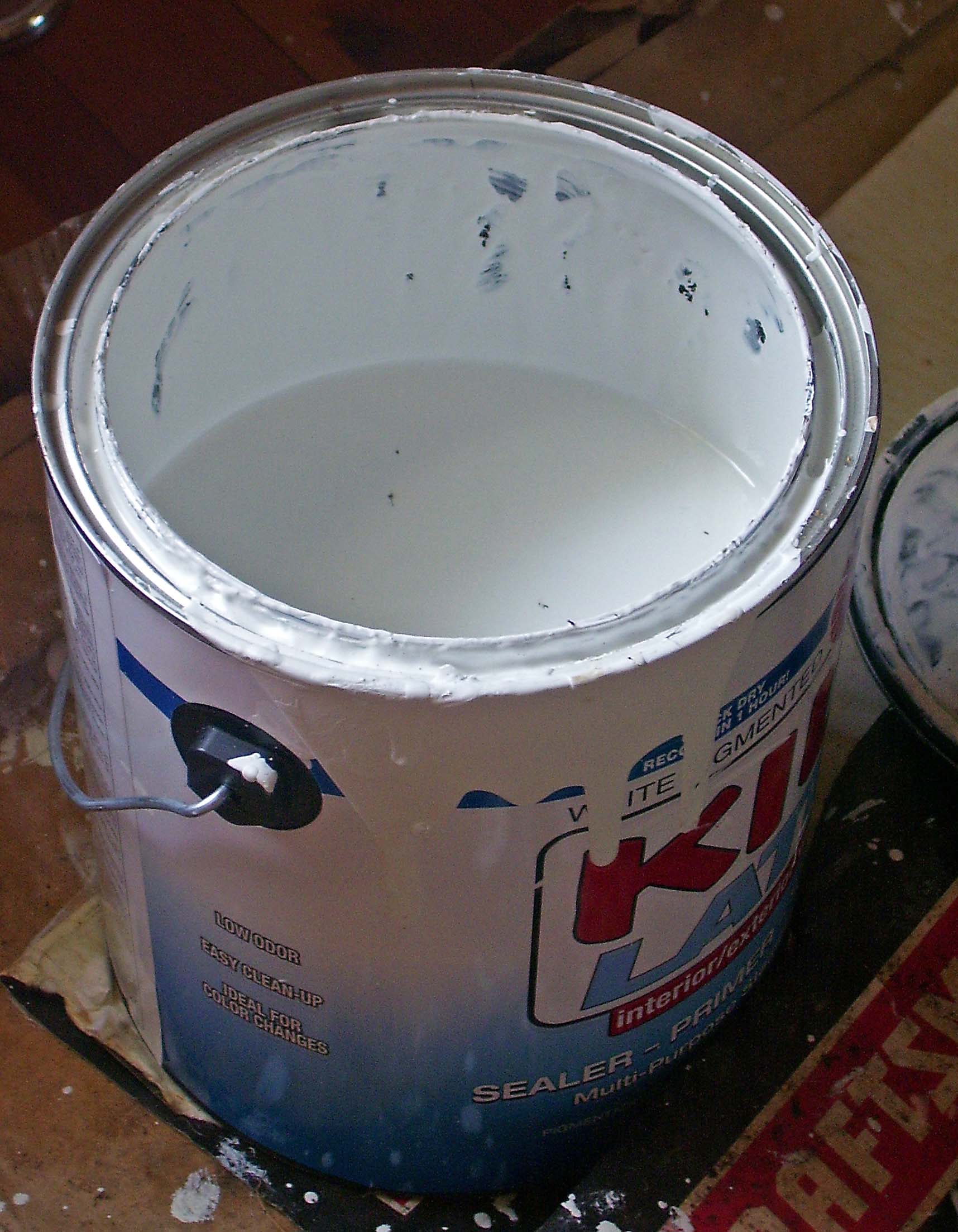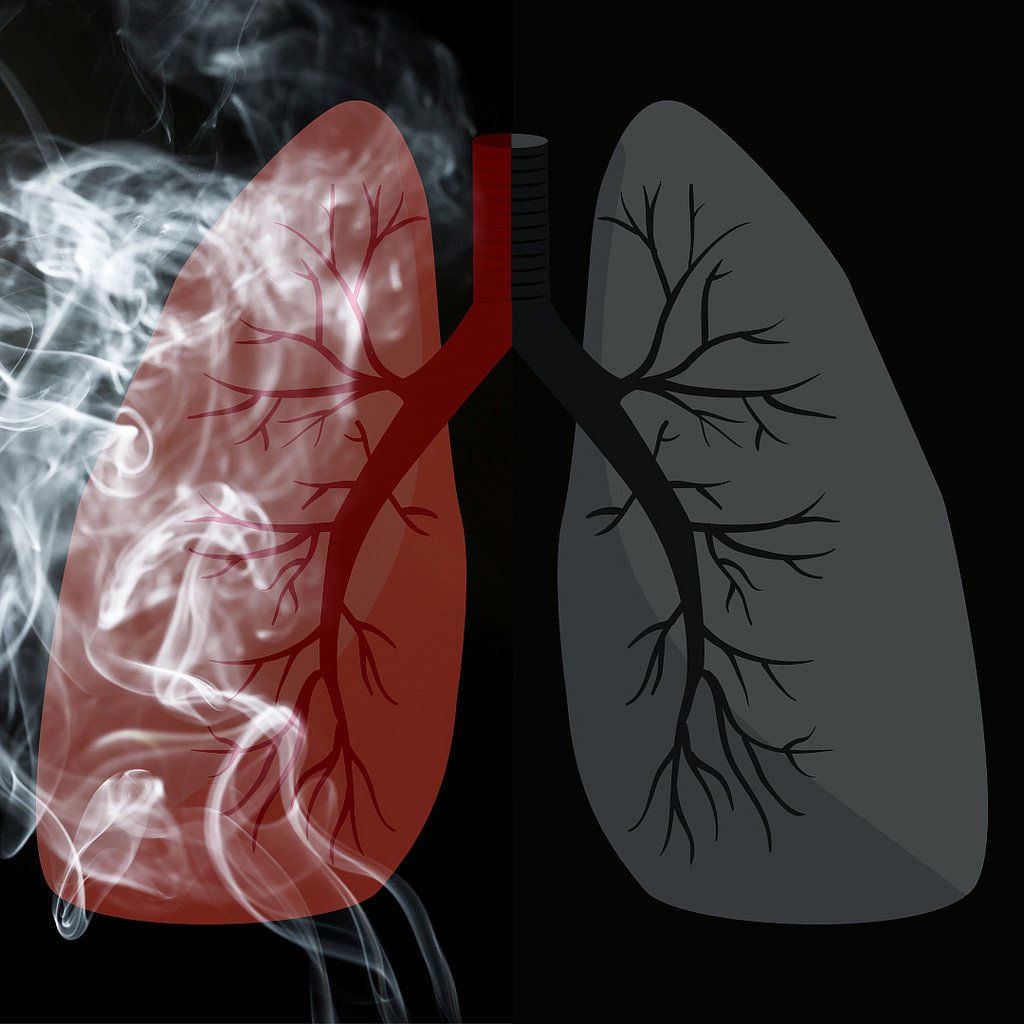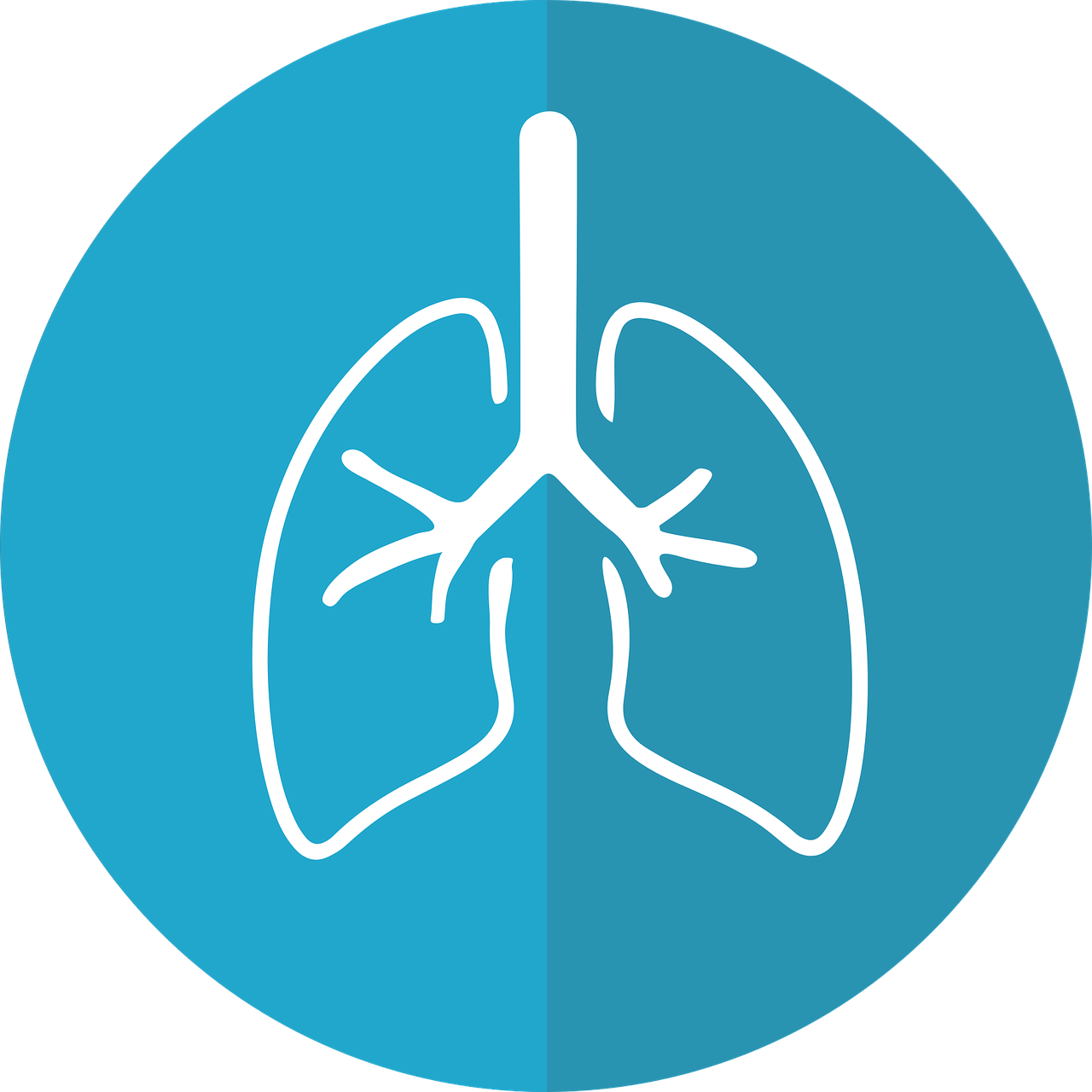They're in the air, in our homes, and in a wide variety of products we use every day—volatile organic compounds (VOCs) are everywhere. Unfortunately, exposure to too many VOCs can be bad for your health and particularly dangerous for your lungs.
VOCs are a major source of air pollution, and they can cause a variety of respiratory problems including lung irritation, lung tissue damage, and serious lung diseases. Certain VOCs can also worsen existing breathing disorders like asthma and COPD.
Fortunately, you can limit your exposure to harmful VOCs if you learn how to recognize and avoid them. That's why, in this post, we're going to tell you everything you need to know about volatile organic compounds and your lungs, including how to protect yourself from hazardous VOCs.
We'll explain what VOCs are, where they come from, and what the research says about how they affect your health. We'll also show you which volatile organic compounds are most harmful to your lungs and how you can minimize your exposure to them at home.
Being able to identify and avoid breathing harmful VOCs is a valuable skill to have, especially if you suffer from a lung condition like COPD or asthma. Even if you are a healthy adult, learning about VOCs can help you make better choices that keep your lungs safe, healthy, and strong.
What are Volatile Organic Compounds?
Volatile organic compounds, or VOCs, are essentially just carbon-based chemicals that can quickly evaporate into a gas or vapor. Previously, VOCs were known throughout the US as reactive organic gases (ROG's), a term you might still come across today.
Whether or not you've ever heard about volatile organic compounds before, you almost certainly encounter many of them every day. Some of these VOCs are completely harmless, but some are dangerous chemicals that can have serious effects on your health.
When makes volatile organic compounds unique is that they evaporate very quickly, and the vapors they release mix into the air the air we breathe. This is how most people get exposed to VOCs both inside and outside their homes: simply by breathing and inhaling them into their lungs.
It's important to understand that “volatile organic compound” is a very general term that encompasses a huge variety of both natural and man-made chemicals. In fact, most of the things we consider to be fragrances or scents actually come from VOCs.
All VOCs are different, each with unique toxicities and varying levels of health risk. Some can only harm you in large amounts, some are toxic in lesser amounts, and some pose little, if any, danger to your health at all.
However, many VOCs are harmful, which is why many are classified as carcinogens, air pollutants, and even explosion risks. Some of the most common and dangerous VOCs are lung irritants which can irritate your airways, damage your lungs, and cause a variety of other serious respiratory conditions.

Volatile organic compounds can affect a variety of different systems and organs in the body, and what levels of exposure are considered “safe” vary significantly between VOCs. But as scientists continue to study their effects, some VOCs are turning out to be even more hazardous than originally thought.
For example, some VOCs become even more potent pollutants when they react with other gases in the air, like nitrogen oxide, to form ozone. Researchers are just now beginning to understand how serious this problem is, and have found that everyday products and chemicals containing VOCs are starting to rival vehicle emissions as a primary source of air pollution.
VOC-catalyzed ozone is particularly harmful because it collects at ground level where we breathe, and it's responsible for variety of short-term and long-term health effects. VOCs also contribute to the formation of fine particles in the air, which is another hazardous type of air pollution.
Here are some examples of common volatile organic compounds you might have heard of before:
- Isopropyl alcohol: used in cleaners and disinfectants
- Acetone: found in nail polish remover and paint removers
- Formaldehyde: found in building materials and molded plastics
Where Do VOCs Come From

Many of the most harmful VOCs come from fuel and manufacturing emissions, including gasoline, diesel fuel, and industrial processes. Others come from chemicals used in commercial products and materials like treated lumber, cleaning chemicals, and paint.
Many pesky airborne irritants, the kinds that make your eyes water or tickle your nose, are actually volatile organic compounds. So are many of the fragrances and chemicals found in basic products that you might use in your home every day.
In fact, common household products containing VOCs, such as cleaning solutions, furniture, and cosmetic fragrances, are a major cause of indoor air pollution. These VOC's, along with those caused by industrial emissions, make their way outdoors where they contribute heavily to smog and and other forms of outdoor air pollution.

Wood smoke and tobacco smoke also contain hazardous levels of volatile organic compounds, which are partially responsible for the deadly health effects of smoking. Unfortunately, tens of millions of Americans regularly inhale VOC's from cigarettes, second-hand smoke, wood-burning stoves, and hazardous workplaces.
Here are some examples of some common products and processes that expose you to harmful VOCs.
Sources of VOCs In and Around Your Home
- Cleaning solutions & disinfectant sprays
- Air fresheners and other artificial fragrances
- Cooking fumes
- Cigarette smoke
- Wood-burning fireplaces
- Scented hair, body, and cosmetic products
- Burning oil or fuel indoors
- Fireplaces and wood-burning stoves
- Pesticides and moth repellent
- Dry-cleaned clothing
- Furniture
- Many glues and adhesives
- Permanent markers, art paints, and other hobby or crafting supplies
- Varnishes and finishes
- Building materials: e.g. paint, paint remover, caulk and sealants, carpet, and flooring (The amount of VOCs emitted by these products declines over time.)
Sources of VOCs Outdoors
- Automobile emissions
- Diesel emissions
- Power plant emissions
- Fuel extraction and processing
- Manufacturing plant emissions
- Emissions from other chemical and industrial processes

How Dangerous are VOCs?
Fortunately, most of the harmful volatile organic compounds only pose a serious danger in large doses or long-term exposures. If you have healthy lungs and only get exposed to small amounts of VOCs, then you are unlikely to experience any major health effects.
However, people with existing lung diseases are often much more sensitive to the effects VOCs. For these people, even low VOC concentrations in the air can trigger respiratory symptoms like coughing and shortness of breath.

Still, even healthy people can experience short-term and long-term symptoms from low or moderate exposure to certain volatile organic compounds. Many people, for instance, get an itchy nose, watery eyes, or feel lightheaded when they use a noxious chemical like bleach.
{{cta('fa8abc2a-1e88-4fa3-82fd-1cb5b9ed43b2','justifycenter')}}
Fumes from recently-painted walls can trigger symptoms for days, and new carpeting can emit high levels of VOC's (sometimes referred to as off-gassing) for weeks or months after installation. One study found that even just working in a newly-constructed building can expose you to enough VOC's to cause eye irritation and airway inflammation.
These symptoms are usually fairly mild and disappear on their own once you get away from the source of VOCs. You usually don't need medical treatment unless you've been exposed to unusually high concentrations or an especially toxic VOC.
Here are some of the most common short-term symptoms that VOCs can cause:
- Eye, nose, throat, and lung irritation
- Coughing and sneezing
- Shortness of breath
- Headaches
- Dizziness
- Minor skin irritation
- Worsened asthma and COPD symptoms
- Nausea or vomiting
Whether or not you realized it at the time, chances are almost certain that you've had minor reactions to VOCs before. For example, if you've ever used a cleaning product that made you sneeze, or felt your eyes stinging near a campfire or BBQ, then you've experienced the symptoms of mild VOC exposure.
This level of exposure is generally not dangerous on its own, especially if it only happens every once in awhile. However, if it happens regularly over the span of several years, it could cause long-term damage your lungs or lead to other health complications.
It's important to note that even a one-time exposure to extremely high levels of VOCs can result in much more serious and long-term symptoms. However, severe VOC exposures are relatively rare and happen most often to people in hazardous occupations that require them to work with or around dangerous VOCs.
Should I be Concerned About VOCs?
If you have a lung or breathing disorder like asthma or COPD, then you probably should be concerned about the amounts of VOCs you get exposed to day-to-day. People with lung conditions are much more vulnerable to the damaging effects of volatile organic compounds for a variety of reasons we'll cover in the next section below.
However, if you are a healthy adult, the answer is not so clear-cut. Researchers are still not sure what kind of impact low-level exposure to VOCs can have, in the long term, on your health.
Research suggests that all the VOCs you encounter as you go about daily life could have a cumulative effect, meaning that even mild exposure over a lifetime could lead to chronic disease. For example, several studies suggest that VOCs from regular activities like cooking and cleaning, if you do them frequently enough, could raise your risk for developing COPD later in life.
Because of this, experts generally recommend that you do your best to limit your exposure to VOCs outdoors and in your home. That could include using low-VOC products, keeping your house well-ventilated, and staying away from sources of second-hand smoke.
In general, exposure to VOC's is most likely to be dangerous if:
- You are exposed to moderate or high levels of harmful VOCs
- You are exposed to low levels of harmful VOCs for a long period of time
- You have asthma, COPD, or another respiratory disease
The most clear and severe cases of adverse effects tend to happen in people who are exposed to above average amounts of VOCs. Studies on a wide range of volatile organic compounds have found that overexposure can increase your risk for cancer, blood disorders, lung conditions, and other serious diseases.

Here are some of the long-term health problems that VOCs can cause:
- Lung damage
- Kidney damage
- Liver damage
- Central nervous system damage
- Blood disorders
- Anemia
- Increased risk for cancers like leukemia (from very heavy or long-term exposures)
Volatile organic compounds are an unavoidable part of daily life, but there are still many things you can do to protect yourself from their harmful effects. For instancde, many hazardous VOCs come from man-made sources that you can avoid and keep out of your home.
How VOCs Affect People with COPD and Other Lung Diseases
Volatile organic compounds that affect your respiratory system tend to have particularly bad effects on people with existing lung diseases, especially asthma and COPD. Because of this, many experts advise people with these health conditions to take special measures to avoid VOCs as much as possible.
Asthma and COPD make your lungs extra sensitive to the quality of the air you breathe. Even temporary exposure to small amounts of respiratory irritants, such as dust, fragrances, and VOCs, can trigger coughing fits, shortness of breath, and other respiratory symptoms.
If you have severe COPD, exposure to VOCs can make your breathing symptoms worse for hours or even days. They can also make you more likely to experience a COPD exacerbation.
If you have high levels of VOCs in your home or workplace, it can make it more difficult to manage your disease in general. You might experience more frequent flare-ups, worse shortness of breath, and an increased risk for lung infections.

Keeping your symptoms under control is a vital part of keeping your lungs healthy, and anything that triggers them on a regular basis can accelerate irreversible lung damage. Because of this, being exposed to harmful VOCs indoors every day can permanently worsen your COPD.
Over the long term, this could have a significant impact on your overall health and quality of life. It can make it more difficult to breathe, more difficult to sleep, and make activities like walking and doing chores around the house more tiring.
Which VOCs Are Bad for Your Lungs?
Now that we've gone over the basics of volatile organic compounds and their risks, let's take a closer look at some specific VOCs that you may be exposed to every day. In this section, we'll introduce you to several of the most common VOCs that are dangerous to breathe so you can better recognize and avoid them in everyday life.
Formaldehyde

You've probably heard of this volatile organic compound before; formaldehyde is an exceptionally common gas that is dangerous to breathe except in very low concentrations.
This VOC originates from a variety of natural and man-made sources. In fact, your body produces a tiny amount of formaldehyde as part of its normal metabolic functions.
However, many commercial products like wood, soaps, and adhesives contain hazardous amounts of formaldehyde. When you use these products in your home, they can emit enough formaldehyde vapor to make the air unhealthy to breathe.
Even very low levels of formaldehyde can cause mild symptoms like eye, nose, and throat irritation. Sensitivity to formaldehyde varies widely from person to person; some (e.g. people with asthma) experience strong allergic reactions when exposed to even a small amount, while others are only bothered by high concentrations of formaldehyde in the air.
The best way to avoid formaldehyde is to replace formaldehyde-containing products with non-toxic alternatives and avoid bringing formaldehyde-treated furniture and wood into your home. If you must, you should air out your house thoroughly and avoid spending time indoors until the bulk of the formaldehyde has had time to dissipate.
Here are some more details about where formaldehyde comes from, what the symptoms of formaldehyde exposure look like, and how it affects your lungs.

Where Formaldehyde Comes From
- Dish soap
- Cosmetics
- Fabric softeners
- Disinfectants
- Permanent-press fabrics
- Leather treatment products
- Treated woods (e.g. plywood)
- Cigarette smoke
- Burning wood and fuel
- Insulation materials
- Carpets
- Other building materials
- Paints and varnishes
- Glues and adhesives
- Paper
Symptoms of Formaldehyde Exposure
- Nose and throat irritation
- Eye irritation
- Skin irritation
- Runny nose
- Difficulty breathing
- Headache
- Nausea
- Lung function decline
- Nose and throat cancers (rarely from long-term or heavy exposures)
How Formaldehyde Affects Your Lungs

Formaldehyde is toxic to the tissue that lines your respiratory tract in relatively low concentrations. According to the Agency for Toxic Substances and Disease Registry, it is not healthy to breathe air with formaldehyde concentrations above .003 ppm (parts per million).
Some of the most common symptoms of exposure to formaldehyde-contaminated air are eye irritation, nose irritation, and airway inflammation. It can cause serious damage to the delicate tissues in your lungs in high enough concentrations, and long-term exposure can cause chronic respiratory symptoms.
Studies show that workers who are overexposed to formaldehyde on the job experience significant lung function decline. Although it is uncommon, occupational exposure can lead to occupational asthma and rare nose and throat cancers.
Formaldehyde is particularly dangerous for people with existing lung diseases, for whom low levels of formaldehyde can trigger breathing difficulties. One study, for instance, found that formaldehyde released by typical laminate flooring was enough to cause severe respiratory symptoms and possibly even cancers in people with asthma and COPD.
Occupations that Put You at Risk of Formaldehydes Exposure
- Manufacturing plastics, resins, and foam insulation
- Hospital or medical work
- Dentistry
- Laboratory workers
- Construction work
- Textile and furniture workers
- Agricultural work (especially livestock farming)
- Morticians who work with embalming fluids
- Beautician work that exposes you to formaldehyde-containing dyes, cosmetics, and other body products
Benzene

Benzene is an abundant volatile organic compound found in many substances you encounter every day. Most people get exposed to benzene by breathing in gasoline fumes (e.g. while filling up your car) or air contaminated by emissions from cars and other fuel-burning devices.
However, certain common household products like paints, carpet, and glues also contain harmful levels of benzene. These products can heavily pollute the air in your home, especially when used for large projects like installing new carpet or painting your walls.
As the case is with many other VOCs, researchers have difficulty estimating exactly how much benzene is safe to breathe. Recent studies suggest that even low-level benzene exposure (e.g. living next to a gas station) can, over time, raise your risk for leukemia and other serious diseases.
For frequent, long-term exposure, benzene levels as low as 1ppm can be dangerous and result in serious blood disorders

